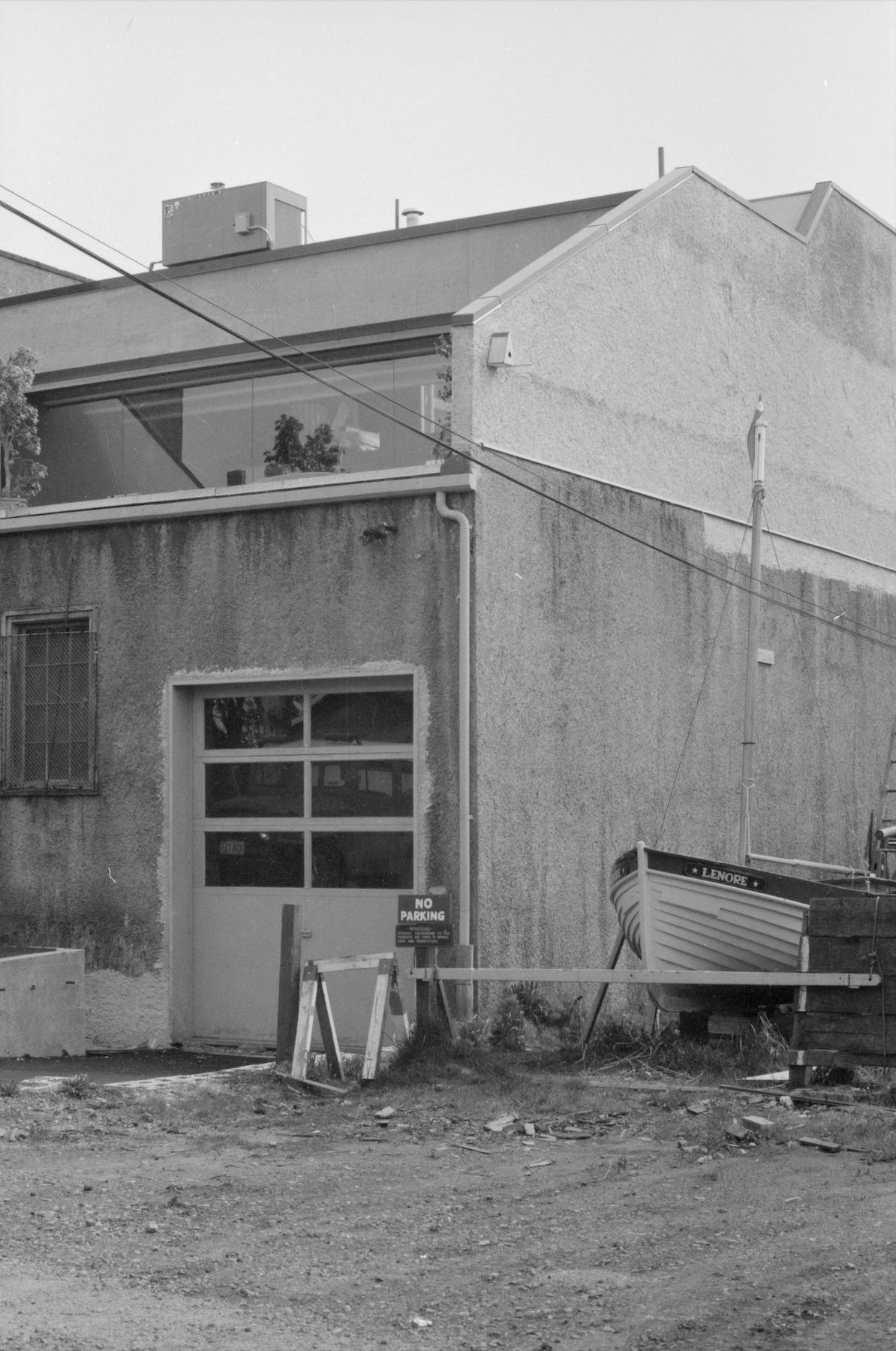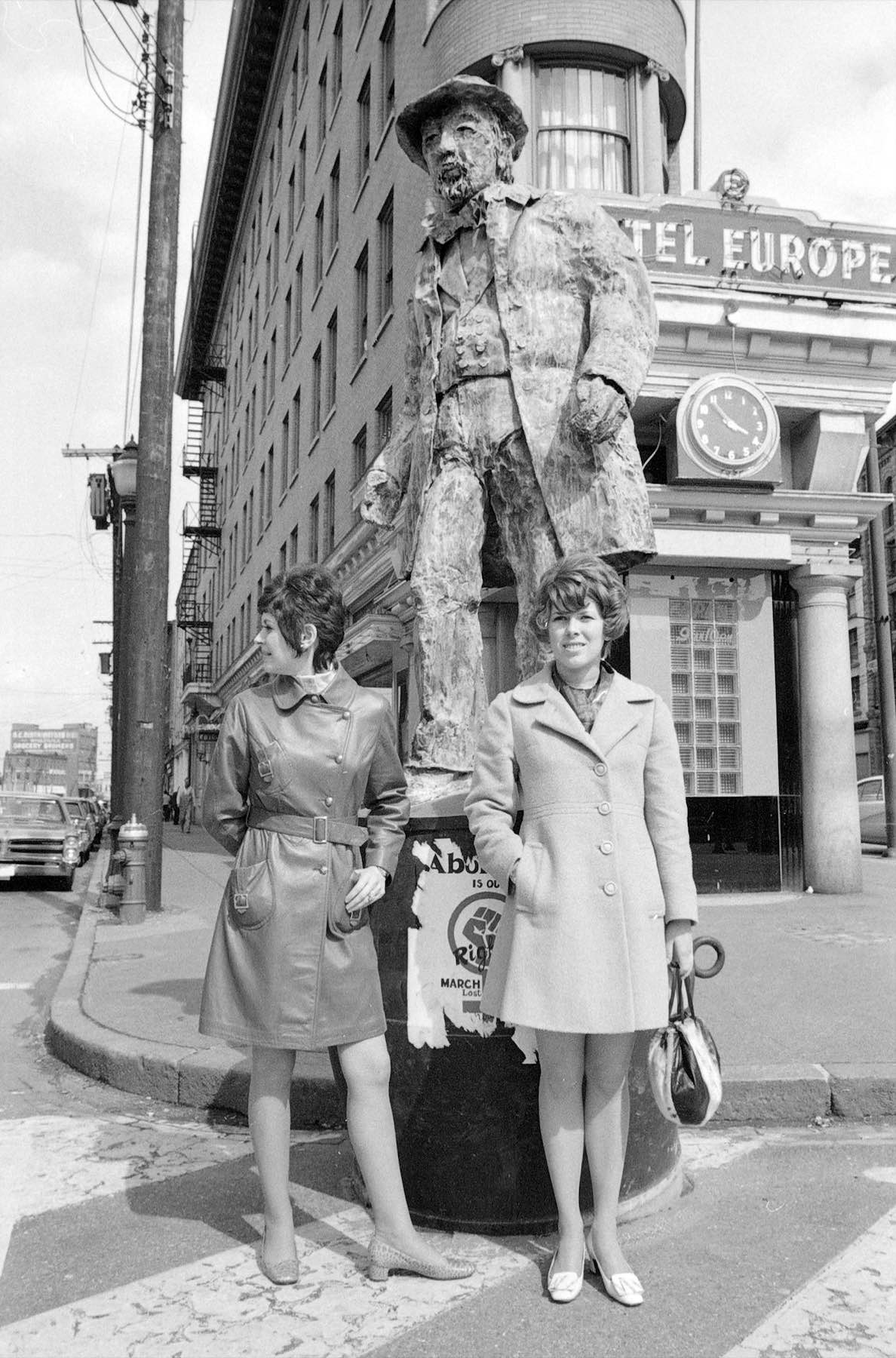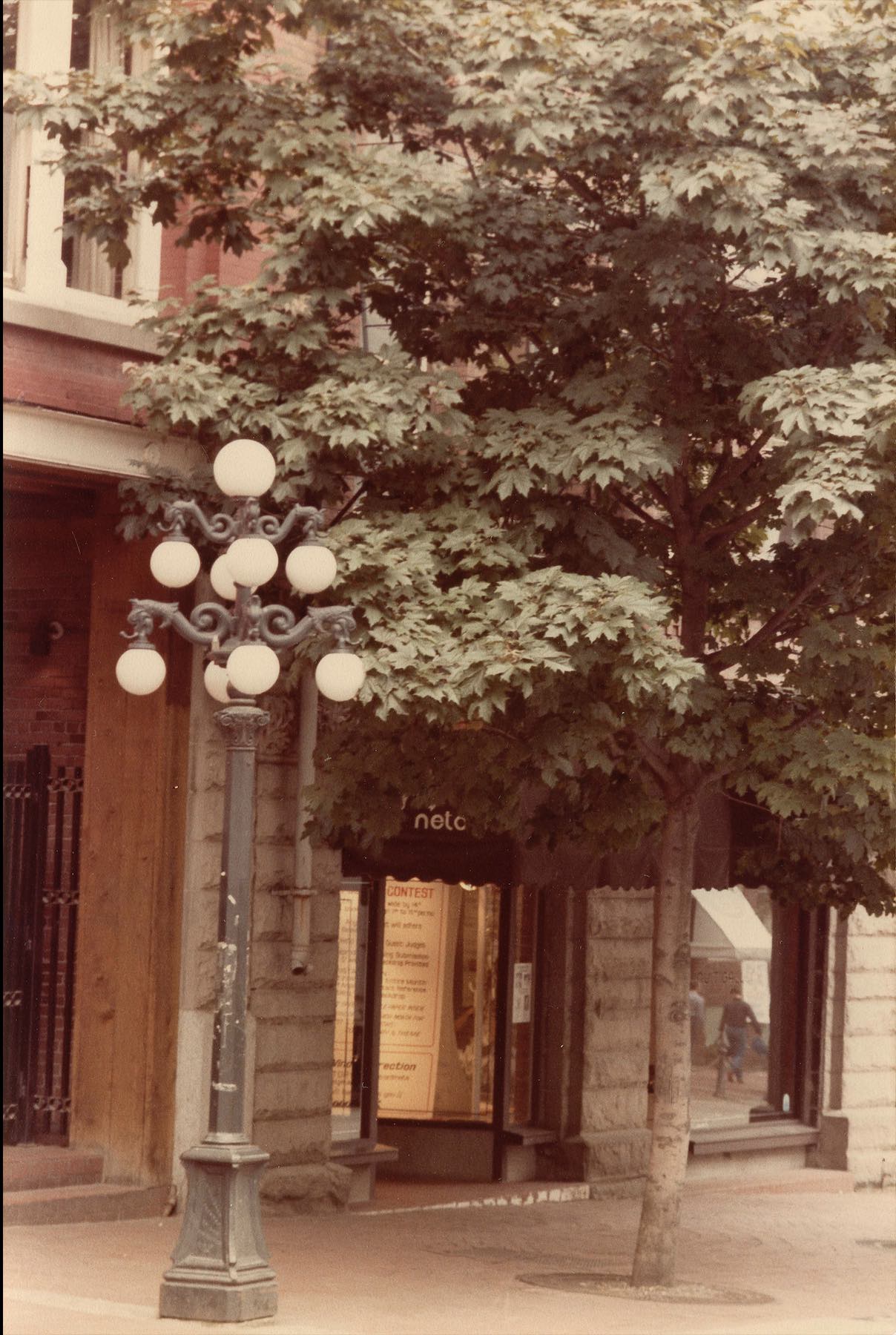Gastown has the distinction of being Vancouver’s oldest neighbourhood. The neighbourhood earned its name thanks to Captain John Deighton, an English mariner and saloon keeper. Captain John had a reputation for being rather talkative and earned the nickname ‘Gassy Jack’. His Globe Saloon was the first business constructed in the area back in 1867, hence the name ‘Gastown’. According to local legend, Captain John provided whiskey for thirsty mill workers in exchange for the construction of his saloon. It was a simple 12 x 24-foot shack, but it was up and running within 24 hours.

With the success of the Globe Saloon other businesses followed and soon there was a burgeoning waterfront community between Carrall and Cambie Streets. In 1870 the area was surveyed and officially named ‘Granville Townsite’ although the majority of people still called it Gastown. By 1875 there were ten businesses in Gastown, four of which were saloons. The 1880s saw more development and Gastown boasted a brothel, a Chinese laundry, a butcher shop, a missionary church, and several stores and hotels.

Just two months after the city of Vancouver was incorporated, the Great Fire burned the new city to the ground. Dozens of people were killed in the fire and when the smoke cleared there were less than a handful of buildings still standing. The rickety wooden structures that comprised the earliest buildings in Gastown were replaced with more sound structures and the influx of relief and investment funds during the fire’s aftermath fuelled the city’s first economic boom.

In the years following the fire, Gastown became a mix of retail and second-hand stores, artisans, and small manufacturers. They also catered to migrant and unemployed resource workers with various services and accommodations as these folks only spent part of the year in town. During the early part of the 20th century, Gastown became known as Vancouver’s wholesale district. By the end of World War II, Gastown was mainly associated with poverty and vice. As a result, it was nicknamed ‘Skid Road’. Businesses relocated, infrastructure aged and fell into various states of disrepair, vacancies increased, and the overall appearance of the neighbourhood was neglected.

In the mid-1960s the proposed ‘Project 200’ kickstarted Gastown’s revitalization. Due to public backlash and failed negotiations between various levels of government Project 200 ultimately failed, however a new wave of entrepreneurs and developers saw the revitalization potential initially outlined by Project 200 and continued investing in the neighbourhood. There were additional hiccups along the way, such as the infusion of counterculture youth in the late 1960s, the 1971 Gastown Riot, and the Gastown Smoke-In & Street Jamboree, but the road to gentrification was being paved. This process has typically come at the expense of Gastown’s most vulnerable community members. Today Gastown is popular with tourists and is home to a variety of businesses including, restaurants, gift shops, boutiques, galleries, nightclubs and bars. It has also been designated a National Historic Site of Canada due to its intact urban setting dating, for the most part, from 1886-1914.















For similar posts please view my previous stories including, Old Photographs from Granville Island, Vintage Photographs from Chinatown, and Old Photographs of Coal Harbour in Vancouver.

The photos above were collected from the City of Vancouver Archives. If you’re interested, additional information can be found for each photograph on their website. Stay tuned for additional posts featuring historical photos from Vancouver, British Columbia, and across Western Canada. We’d love to know what you think in the comment section below.



